Learn How to Shred Cabbage by cutting into wedges and then thinly slicing with a knife. In less than 5 minutes you will have perfectly shredded red or green cabbage to add a low-carb and healthy crunch to your favorite taco, stir-fry, or coleslaw recipes!
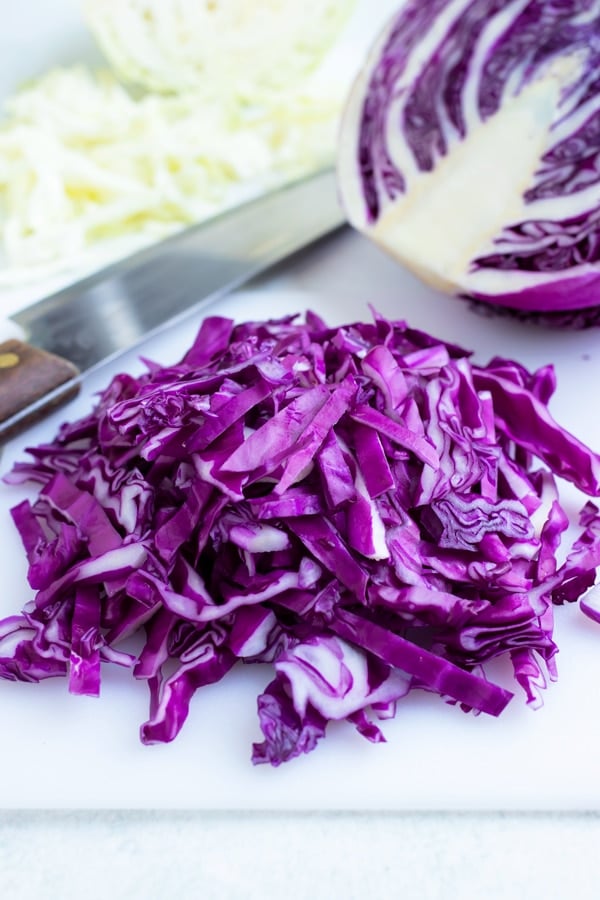
Shredded Cabbage
Knowing how to cut and shred cabbage is an easy technique that every home chef should know how to do.
From adding it into your favorite Egg Roll in a Bowl recipe stir-fry, mixing it into a Southern Coleslaw recipe, or topping off some Blackened Fish Tacos…
There are SO many ways you can use this healthy and low-carb vegetable in your daily cooking.
And all you will need is a knife, a cutting board, and a head of red or green cabbage!
Selecting the Best
When purchasing red or green cabbage at your grocery store you will want to make sure the head is firm and tight with very few loose and brown leaves.
The firmness of the cabbage will determine how fresh it is. If it is softening, the vegetable is starting to spoil.
The brown or discolored spots are also an indication that the cabbage is decaying.
Also, the cabbage should be pretty dense and heavy for its size.
How to Shred Cabbage
Since their anatomy is pretty similar, we will be learning how to cut and shred both red and green cabbage.
Here are the step-by-step instructions you can follow to shred cabbage quickly and easily:
- Remove any damaged or dark leaves from the head of cabbage.
- Place cabbage stem-side down on a cutting board and cut in half lengthwise.
- Put each half of the cabbage flat side down and cut in half again, going through the stem.
- Locate the stem in the center of each quarter and cut at an angle to remove it. Repeat with the remaining quarters.
- Place cabbage quarters flat-side down on the cutting board and cut into thin slices.
- Cut perpendicular to the slices to make smaller 1-2 inch pieces.
One head of cabbage yields approximately 8 to 8 ½ cup of shredded cabbage.
Types of Cabbage
While red and green are the most common types of cabbage in the United States, there are over 400 different varieties.
- Cannonball (Green) – By far the most popular type of cabbage and has a slightly peppery taste when served raw and develops a sweeter flavor when cooked.
- Red – This variety is very similar to green cabbage and can be used interchangeably in most recipes.
- Savoy – A prettier type with a curly leaf, this cabbage is a little more tender with looser leaves than the above 2 varieties.
- Napa – Or sometimes referred to as Chinese cabbage, is often used in stir-frys or as the main ingredient in kimchi.
- Brussels Sprouts – Yes! These are actually tiny heads of cabbage.
- Learn about other types of cabbage.
Storing
It is best to store a head of cabbage wrapped in a lightly damp paper towel in the crisper drawer of the refrigerator.
A full head will last for about 1 week on the countertop and 2 weeks in the refrigerator before the leaves being to soften and turn brown.
Freezing
You can freeze either shredded cabbage or cabbage wedges.
Place shredded cabbage in a large Ziploc bag, remove any excess air, and freeze fresh cabbage for up to 4-6 weeks.
To freeze cabbage wedges you will first want to blanch them in boiling water for 90 seconds and immerse them in an ice-water bath. Blanched cabbage will freeze well for up to 4-6 months.
How to Cook Cabbage
One of the best things about this leafy green powerhouse is that it can be enjoyed fresh or cooked.
- You can sauté it in a pan as Unstuffed Cabbage Rolls or Panda Express Chow Mein stir-fry,
- Stuff it in some classic Cabbage Rolls.
- Make Sauteed Cabbage or Roasted Cabbage Steaks.
- Or serve it fresh in a Thai Peanut Quinoa Salad or on top of Roasted Cauliflower Tacos.
Tap stars to rate!
How to Cut & Shred Cabbage

email this recipe!
Ingredients
- 1 head of cabbage red or green
Instructions
- Remove any damaged or dark leaves from the head of cabbage.
- Place cabbage stem-side down on a cutting board and cut in half lengthwise.
- Put each half of the cabbage flat side down and cut in half again, going through the stem.
- Locate the stem in the center of each quarter and cut at an angle to remove it. Repeat with the remaining quarters.
- Place cabbage quarters flat-side down on the cutting board and cut into thin slices.
- Cut perpendicular to the slices to make smaller 1-2 inch pieces.
Tap stars to rate!
Video
Notes
Meal Prep & Storage
- To Store: Store a full head of cabbage wrapped in a slightly damp paper towel in the crisper drawer of the refrigerator, up to 2 weeks. Store raw sliced cabbage in an airtight container in the fridge, up to 3 days.
- To Freeze: Before freezing, any form of cabbage should be blanched and then shocked in an ice-water bath, to preserve freshness. Fresh shredded cabbage can be frozen in a large Ziploc bag with all the air removed, up to 4-6 weeks. Cabbage wedges can be flash frozen on a baking sheet for 6-10 hours, to prevent sticking together, then frozen together long term in a Ziploc bag, up to 4-6 months.
- To Reheat: If using the cabbage raw, move it to the fridge a few hours ahead, to thaw. If cooking the cabbage, there is no need to thaw it ahead of time.
Nutrition
Nutrition information is automatically calculated, so should only be used as an approximation.

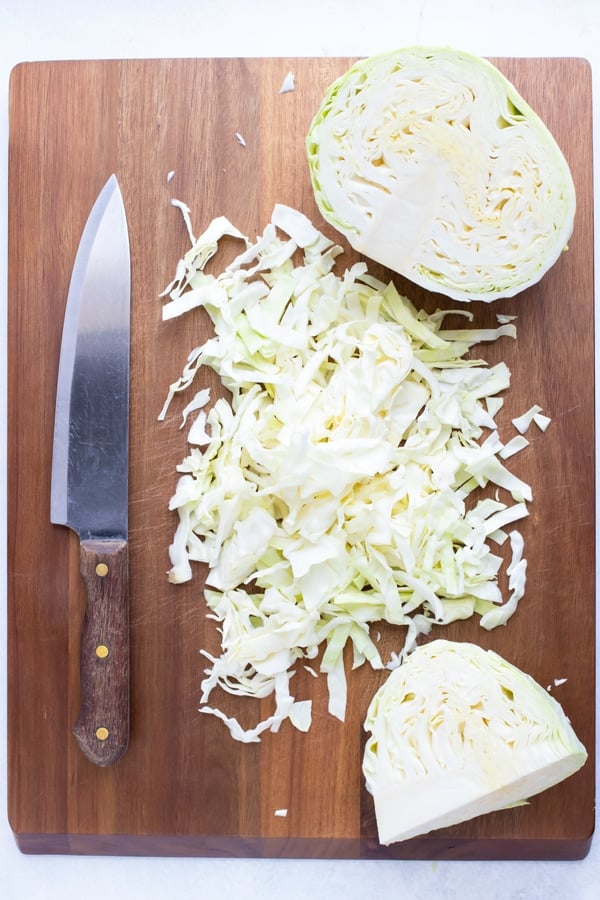
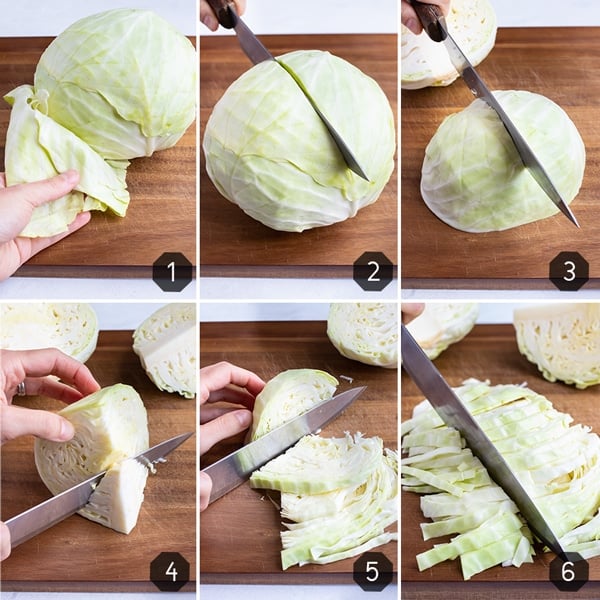
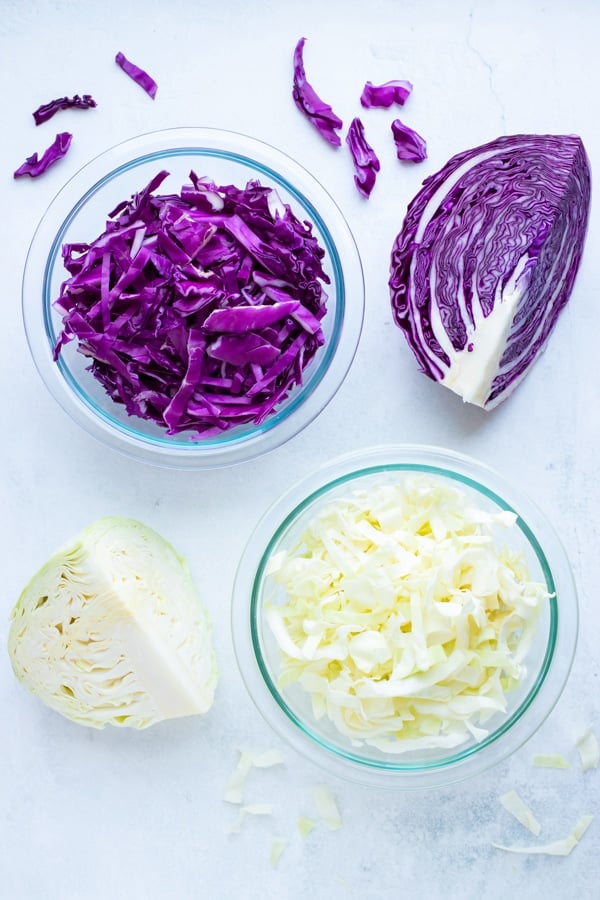
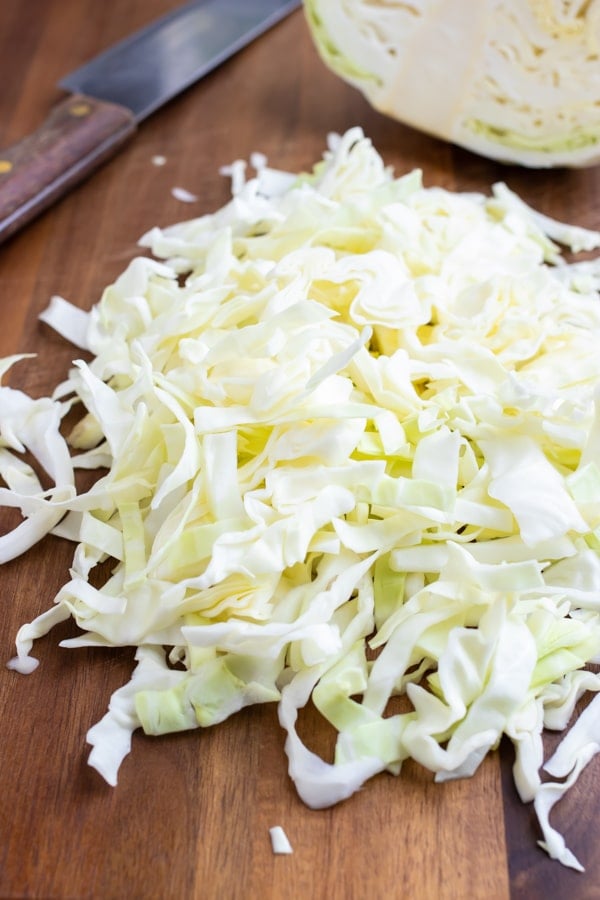

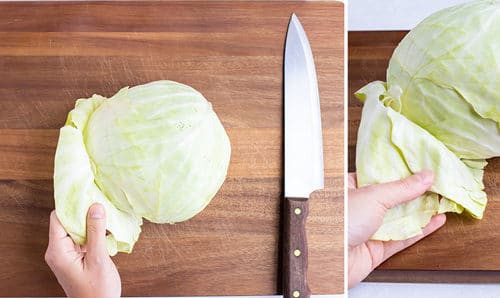
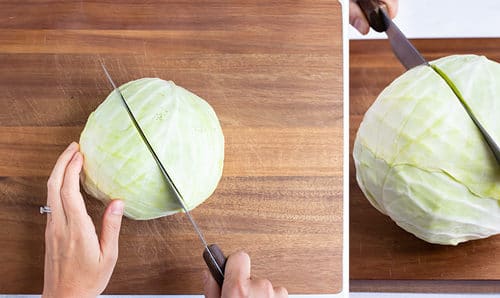
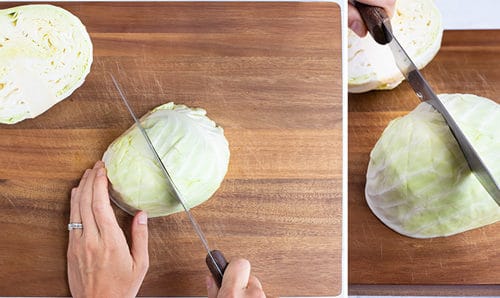
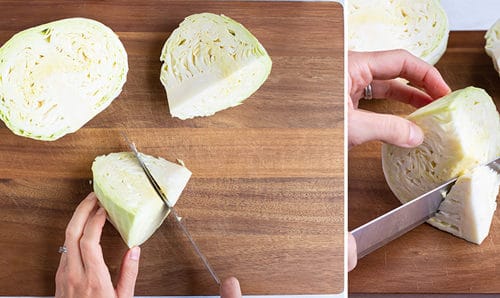
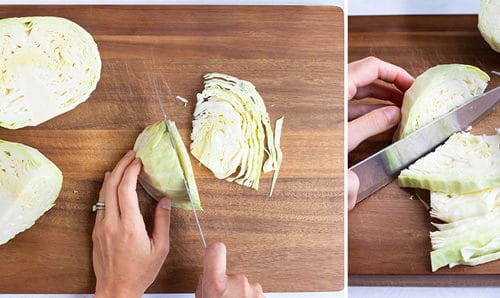
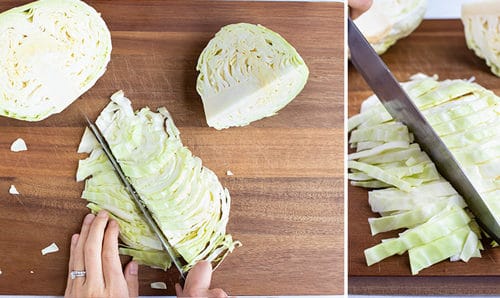
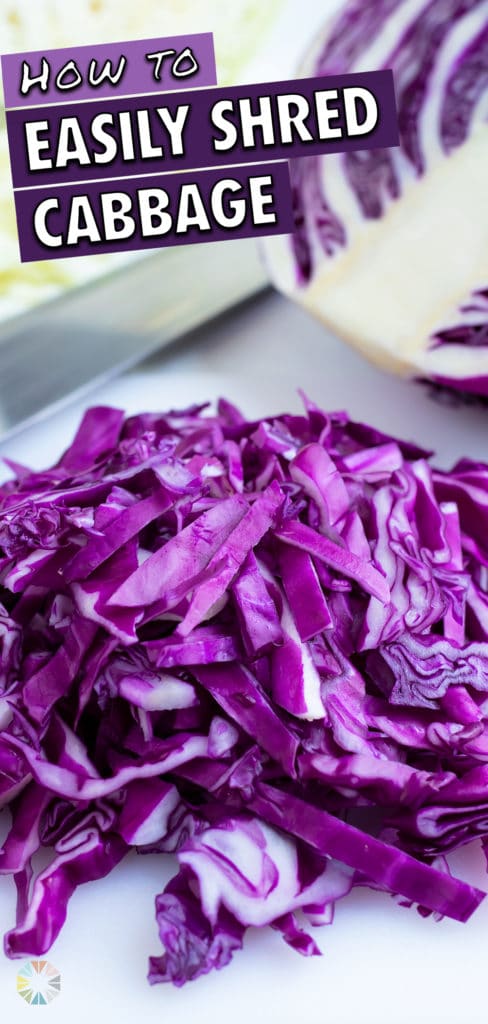

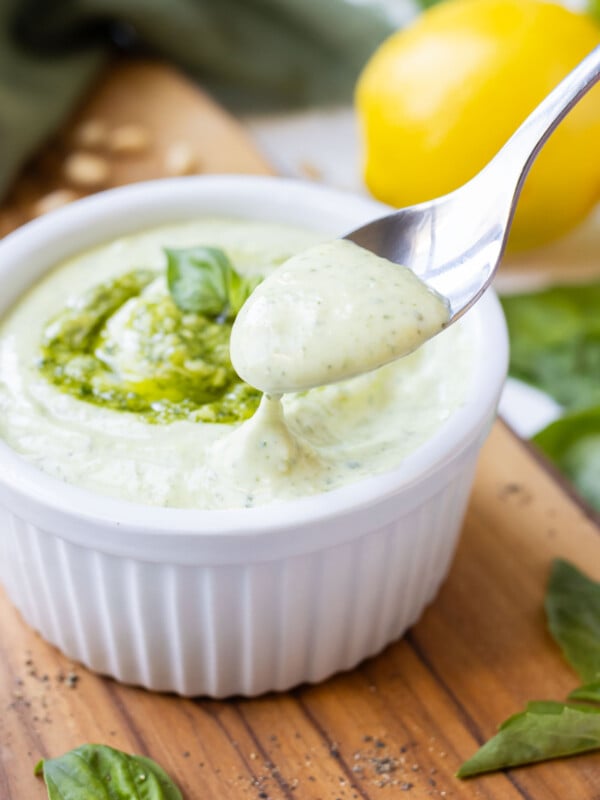
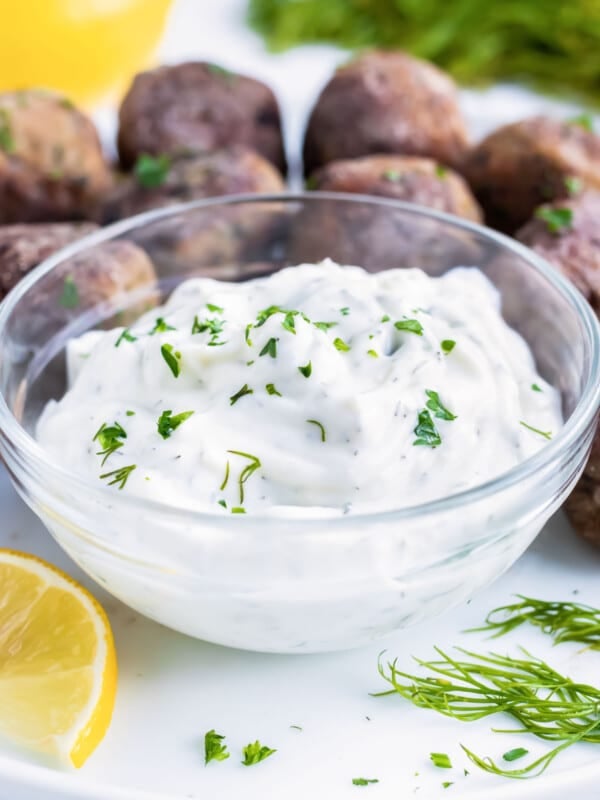


Do you wash the cabbage…? If so, before or after cutting?
You can rinse it before cutting but it will only really clean the surface of the cabbage. If you have a head that’s pretty dirty, then you can always rinse the shredded cabbage and then dry it like you would other salad greens!